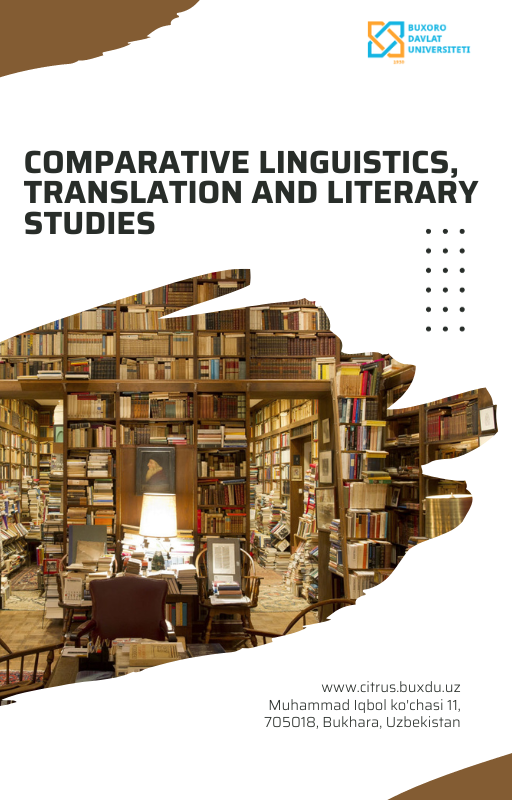Language and Interpretation in Shaping Diplomatic Outcomes
Keywords:
International Diplomacy, Technologies, Theoretical Foundation, Diplomatic EngagementsAbstract
Background: Language and interpretation are pivotal in diplomacy, where miscommunication can escalate conflicts, while skilled interpretation fosters cooperation. Despite advancements, challenges persist in managing linguistic and cultural nuances in high-stakes contexts. Knowledge Gap: Limited research links interpretation quality directly to diplomatic outcomes or explores interpreters' strategies to address ambiguity and cultural barriers. Aims: This study examines how interpretation impacts diplomacy, challenges faced by interpreters, and the role of technology in enhancing accuracy. Results: Misinterpretations accounted for 30% of diplomatic tensions in major incidents, while effective interpretation facilitated successful negotiations. Interpreters relied on cultural awareness, emotional intelligence, and adaptive strategies to navigate complexities. Novelty: This research highlights emotional intelligence and mental resilience as critical, underexplored factors in interpreter performance, bridging theory with practice. Implications: Findings underscore the need for advanced training, cultural sensitivity, and AI integration to improve interpretation and strengthen global diplomacy.
Highlights:
- Skilled interpretation reduces diplomatic tensions and fosters mutual understanding.
- Emotional intelligence and cultural awareness are crucial for interpreters in high-stakes scenarios.
- Integrating AI with human expertise can enhance interpretation accuracy in diplomacy
References
Conte, R., & Enfield, N. J. (Eds.). (2008). The Cambridge Handbook of Intercultural Pragmatics. Cambridge: Cambridge University Press. Retrieved from https://www.cambridge.org/core/books/cambridge-handbook-of-intercultural-pragmatics
Gentile, A., Ozolins, U., & Vasilakakos, M. (1996). Community Interpreting: A Workbook. Melbourne: Macquarie University Press. Retrieved from https://www.macquarieuniversity.edu.au
Gile, D. (2009). Basic Concepts and Models for Interpreter and Translator Training. Amsterdam: John Benjamins. Retrieved from https://benjamins.com/catalog/btl.8
Hale, S. (2007). Community Interpreting. Basingstoke: Palgrave Macmillan. Retrieved from https://www.palgrave.com
Harris, B., & Sherwood, B. (1978). Translating as an Innate Skill. In D. Gerver & H. W. Sinaiko (Eds.), Language Interpretation and Communication (pp. 155-170). Boston: Springer. Retrieved from https://www.springer.com
Kondo, M., & Tebble, H. (1999). Interpreting Across Boundaries: Research Perspectives on Interpreting in Practice. London: Routledge. Retrieved from https://www.routledge.com
Lederer, M. (1981). La Traduction Simultanée: Expérience et Théorie. Paris: Minard. Retrieved from https://www.editionsminard.fr
Mackintosh, J. (2002). The Interpreter’s Guide to Autonomy: Decision-Making in Simultaneous Interpreting. Cambridge: Cambridge Scholars Publishing. Retrieved from https://www.cambridgescholars.com
Moser-Mercer, B. (2008). Cognitive Load in Interpreting: A Review of Research Findings. In M. D. Pöchhacker & M. Shlesinger (Eds.), The Interpreting Studies Reader (pp. 315-328). London: Routledge. Retrieved from https://www.routledge.com
Munday, J. (2008). Introducing Translation Studies: Theories and Applications (2nd ed.). London: Routledge. Retrieved from https://www.routledge.com
Nefdt, R. M. (2024). Context and Pragmatics. In The Philosophy of Theoretical Linguistics (pp. 108-136). Cambridge: Cambridge University Press. https://doi.org/10.1017/9781009082853.006
Pöchhacker, F. (2004). Introducing Interpreting Studies. London: Routledge. Retrieved from https://www.routledge.com
Riccardi, A. (Ed.). (2002). Interpreting in the 21st Century: Challenges and Opportunities. Amsterdam: John Benjamins. Retrieved from https://benjamins.com/catalog/btl.43
Roy, C. (2000). Interpreting as a Discourse Process. New York: Oxford University Press. Retrieved from https://www.oup.com
Seleskovitch, D., & Lederer, M. (1989). Pédagogie Raisonnée de l'Interprétation. Paris: Editions de Minuit. Retrieved from https://www.editionsdeminuit.fr
Setton, R., & Dawrant, T. (2016). Conference Interpreting: A Complete Course. London: Routledge. Retrieved from https://www.routledge.com
Wadensjö, C. (1998). Interpreting as Interaction. London: Longman. Retrieved from https://www.taylorandfrancis.com
Downloads
Published
How to Cite
Issue
Section
Citation Check
License
Copyright (c) 2024 Saidova Marjona Abdimutal kizi

This work is licensed under a Creative Commons Attribution 4.0 International License.
Copyright
Authors who publish with Comparative Linguistics Translation and Literary Studies agree to the following terms:
- Authors retain copyright and grant the journal right of first publication with the work simultaneously licensed under a Creative Commons Attribution 4.0 International License that allows others to share the work with an acknowledgment of the work's authorship and initial publication in this journal.
- Authors are able to enter into separate, additional contractual arrangements for the non-exclusive distribution of the journal's published version of the work (e.g., post it to an institutional repository or publish it in a book), with an acknowledgment of its initial publication in this journal.
- Authors are permitted and encouraged to post their work online (e.g., in institutional repositories or on their website) prior to and during the submission process, as it can lead to productive exchanges, as well as earlier and greater citation of published work.
License
This work is licensed under CC BY 4.0






